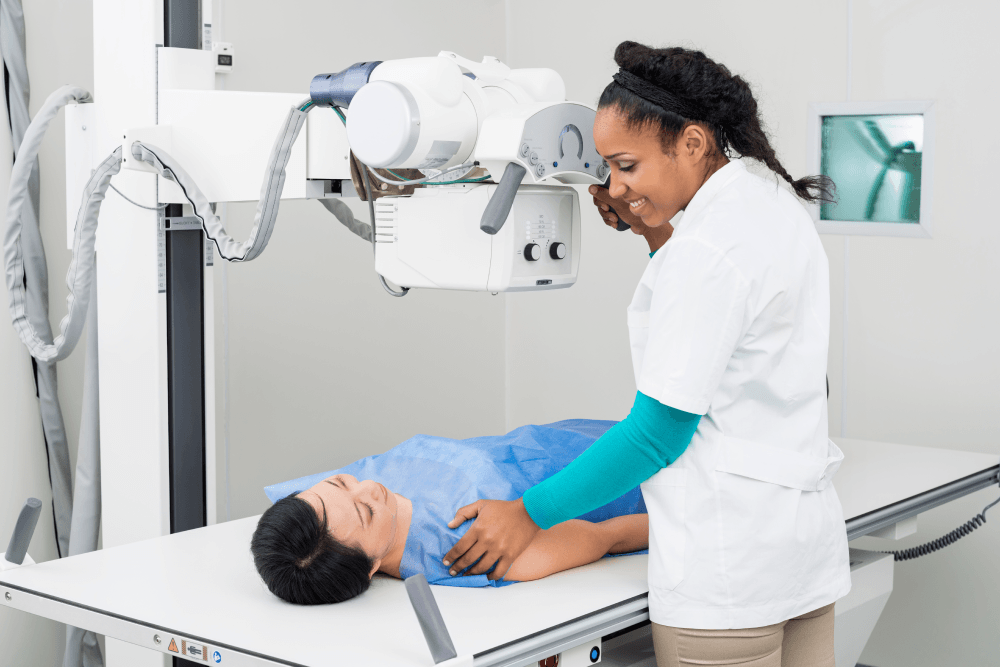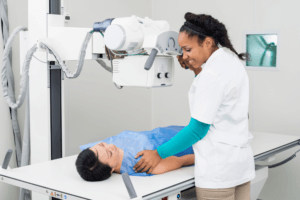X-ray technology continues to provide unparalleled insights and efficiency in diagnosis and treatment. In 2023 alone, the X-ray systems market was valued at $3.04 billion, with projected growth exceeding 2% from 2023 to 2033. Advancements in technology and the way we capture, analyze, and manage X-rays are changing, enhancing the effectiveness, efficiency, and accuracy of X-ray imaging processes.
However, the effectiveness of X-ray imaging hinges not just on the quality of the hardware but also on the software that processes and interprets the images. As medical professionals seek to optimize their practice, selecting the right X-ray imaging software becomes paramount. Here, we explore the key features that professionals in these fields should prioritize when choosing X-ray imaging software.
Image Quality and Resolution
X-ray imaging software facilitates the processing and enhancement of raw X-ray images, enhancing their quality, clarity, and diagnostic value. Through functionalities such as noise reduction, contrast adjustment, and image sharpening, the software unveils subtle abnormalities that might escape notice in the original images, thus aiding in more accurate diagnoses.
High-quality images with optimal resolution empower healthcare professionals to promptly make accurate diagnoses, identify abnormalities, and assess treatment efficacy. The improved visualization of anatomical structures and pathological changes supports more precise measurements and analyses, bolstering diagnostic confidence and reducing the risk of misinterpretation.
Furthermore, clear and detailed images streamline workflow processes, enabling efficient interpretation, reporting, and communication among healthcare teams. Prioritizing software solutions that deliver superior image quality and resolution ensures precise diagnosis, optimal patient care, and enhanced clinical outcomes in medical practice.
Compatibility and Integration
Compatibility ensures seamless interaction between X-ray software and other crucial systems and technologies utilized in healthcare facilities, including Picture Archiving and Communication Systems (PACS), Electronic Medical Records (EMR), and Radiology Information Systems (RIS). When X-ray software aligns with these systems, it facilitates effortless data exchange, image sharing, and retrieval of patient information.
This compatibility fosters comprehensive patient care and interdisciplinary collaboration among healthcare professionals. Furthermore, it enables the integration of X-ray images and data into the broader healthcare ecosystem, ensuring that diagnostic information is readily accessible to clinicians, radiologists, and specialists across various departments and locations.
Integration significantly enhances workflow efficiency by streamlining processes and eliminating manual data entry and duplication efforts. By seamlessly integrating with existing workflows and technologies, X-ray software minimizes disruptions and redundancies, allowing healthcare professionals to dedicate more time to patient care rather than administrative tasks.
Additionally, integration facilitates automated data transfer and synchronization between different systems, mitigating the risks of errors and delays associated with manual data entry. This optimized workflow efficiency, driven by compatibility and integration, contributes to expedited diagnosis, treatment planning, and patient management, ultimately leading to improved clinical outcomes and an elevated standard of care across medical practice.
User-friendly Interface
Moreover, a user-friendly interface promotes productivity by streamlining workflow processes and decreasing the time required for tasks such as image interpretation, analysis, and reporting. Customizable layouts, shortcut keys, and intuitive menu structures empower users to tailor the software to their preferences and workflow requirements, further enhancing efficiency and productivity in clinical practice.
Furthermore, a user-friendly interface cultivates user satisfaction and engagement, leading to increased adoption and utilization of the X-ray software. Healthcare professionals are more inclined to embrace software that is easy to use and navigate, resulting in higher compliance and adherence to best practices in image acquisition and interpretation. Additionally, a positive user experience enhances job satisfaction and morale among healthcare professionals, fostering a more conducive work environment and ultimately contributing to improved patient care.
Advanced Image Processing Tools
This refinement improves image clarity and definition, empowering healthcare professionals to make more accurate diagnoses and informed treatment decisions. Additionally, these tools help mitigate common issues such as artifacts and distortions, ensuring that the resulting images faithfully represent the underlying anatomy and pathology.
Moreover, advanced image processing tools empower healthcare professionals to conduct quantitative analyses and measurements, facilitating precise evaluations of anatomical structures and pathological changes. For instance, they may enable the measurement of bone density, calculation of lesion volumes, or assessment of tissue perfusion dynamics. Such quantitative data not only enhances diagnostic accuracy but also aids in treatment planning and monitoring.
Furthermore, these tools may integrate artificial intelligence (AI) algorithms that assist in image interpretation and analysis, providing valuable insights and diagnostic assistance to healthcare professionals, thereby further enhancing the diagnostic capabilities of X-ray software.
Advanced Diagnostics and Reporting
Moreover, these analytics tools facilitate the integration of clinical data from various sources, including patient demographics, medical history, and laboratory results, providing a comprehensive view of the patient’s health status and enabling personalized treatment plans tailored to individual needs.
In addition to advanced analytics, robust reporting functionalities are indispensable for documenting findings, communicating results, and ensuring compliance with regulatory requirements in medical practice. X-ray software equipped with customizable reporting templates and automated report generation capabilities streamlines the documentation process, saving valuable time for healthcare professionals.
Furthermore, comprehensive reporting features facilitate the creation of clear and concise reports that can be readily shared with patients, referring physicians, and other members of the healthcare team. These reports serve as vital documentation for patient records and enhance communication and collaboration among healthcare providers, ultimately elevating the quality and continuity of patient care.
In conclusion, selecting the right X-ray imaging software is a critical decision for medical professionals aiming to deliver optimal patient care. With the right software solution in place, medical practices can elevate their standards of care and enhance patient outcomes.
Want to learn more about our in-house software? Click here.








